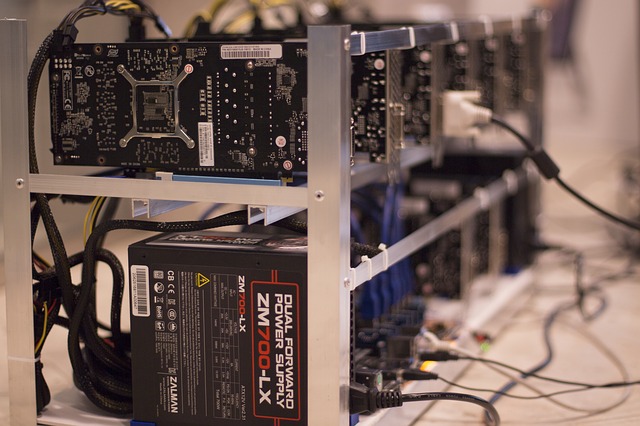Build a Bitcoin mining rig properly.
While Bitcoin mining is run by large companies with huge warehouses full of equipment, it is still possible for individuals to mine successfully as part of a pool. Here's how to get started with crypto mining.
1) How to build the right mining rig for yourself?
If you're asking how to set up bitcoin mining hardware, you probably understand how bitcoin works and what bitcoin mining means. But we need to move from theory to practice and start producing digital money. The first thing you need to do is decide which material you will use. There are two main things to consider when choosing:
- Hash rate: This is the number of calculations your hardware can make per second while trying to beat the target hash. Hash rates are measured in megahash, gigahash, terahashes, and exahash/sec (MH/s, GH/s, TH/s, and EH/s). The higher your hash rate (compared to the average current hash rate), the more likely you are to solve a block of transactions. The Bitcoin Wiki mining hardware comparison page is a good place to get rough information on hash rates for different hardware.
- Energy consumption: When choosing your equipment, it is useful to look at the energy consumption of the device. Bitcoin mining rigs have a healthy appetite for electricity, and it comes at a cost. You want to make sure you don't spend all your money on coins that might not be worth the money you spent on electricity.
Divide the hashes by the number of watts specified in the hardware specifications to determine the number of hashes you will receive for each watt of electricity you use.
For example, if you have a 500 GH/s device and it draws 400 watts, you will get 1.25 GH/s per watt. You can check your electricity bill or use the online electricity price calculator to find out how much cash this means.
There are three main categories of hardware for Bitcoin miners: GPUs, FPGAs, and ASICs. We will examine them in depth below.
2) What is the best hardware to mine bitcoin and other cryptocurrencies?
1. The least powerful category of crypto mining hardware is your computer itself. Theoretically, you could use your computer's CPU to mine bitcoins, but in practice, it's so slow by today's standards that it's pointless.
You can improve your bitcoin hash rate by adding graphics hardware to your desktop computer. Graphics cards contain graphics processing units (GPUs). These are designed for heavy math lifting so they can calculate all the complex polygons needed in high-end video games. This makes them particularly good at the hash math required to solve transaction blocks in the Secure Hash Algorithm (SHA) – or SHA-256 in the case of Bitcoin.
One of the benefits of GPUs is that they leave your options open. Unlike the other options discussed later, these units can be used with cryptocurrencies other than bitcoin. Litecoin, for example, uses a different proof-of-work algorithm than Bitcoin, called Scrypt. It is optimized to be compatible with CPUs and GPUs, making it a good option for GPU miners who want to switch between different currencies. However, like bitcoin mining, ASICs now dominate the bitcoin mining landscape.
CPU and GPU mining is no longer relevant these days. With the release of ASIC mining power, Bitcoin's mining difficulty has accelerated so much that simple graphics cards cannot compete.
2. FPGA miners
A Field Programmable Gate Array (FPGA) is an integrated circuit designed to be configured after it is built. This allows a crypto mining hardware manufacturer to purchase chips in bulk and then customize them for bitcoin mining before putting them in their own hardware. They offer performance improvements over CPUs and GPUs as they are customized for Bitcoin mining. Single-chip FPGAs have been seen to run at around 750 MH/s, although this is on the high end, manufacturers may put more than one chip on a card.
This was a significant upgrade over CPU and GPU mining at the time. However, nowadays FPGAs are no longer competitive in bitcoin mining due to their poor performance.
3. ASIC chips
This is where the action takes place. Application-specific integrated circuits (ASICs) are specifically designed to do one thing: mine bitcoin at high speeds as efficiently as possible. Because these chips must be designed specifically for this task and then manufactured, their manufacture is expensive and time-consuming, but their speed is staggering. As of this writing, units are selling at rates ranging from 7 to 14 Terahash/second (1 Terahash = 1 trillion hashes). It will be interesting to see if there is further progress to be made beyond the 14 TH/ point. sec.
Calculate your miner's projected profitability using online mining profitability calculators like this one before you make your purchase to start your crypto mining business. You can enter parameters such as equipment cost, hash rate, power consumption, and current bitcoin price to see how long it will take to pay back your investment.
if you like this content make sure to subscribe to our blog

